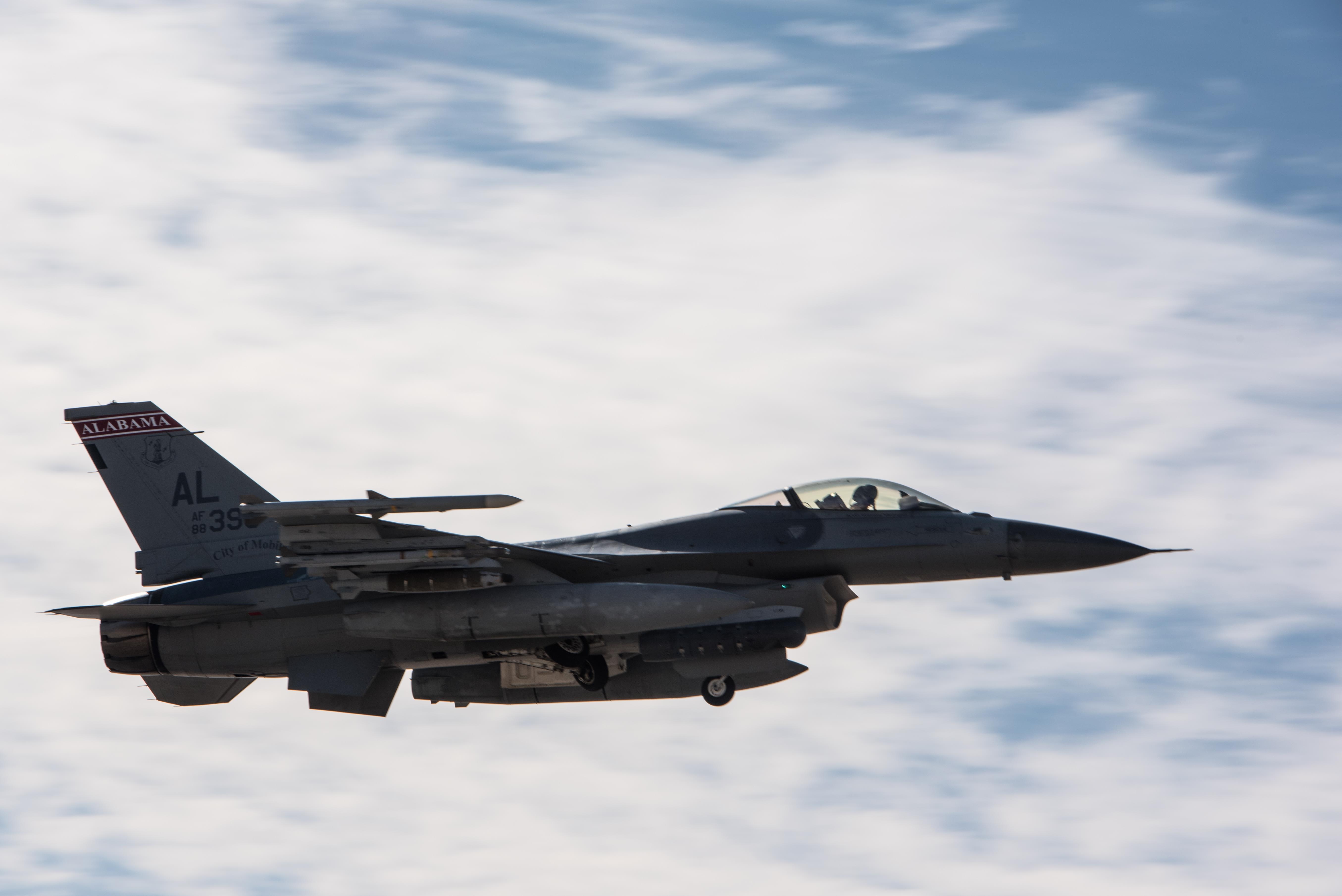An F-16 deployed with the 134th Expeditionary Fighter Squadron takes off for a combat mission from the 407th Air Expeditionary Group, Southwest Asia, Dec. 13, 2016. Air Force photo by MSgt. Benjamin Wilson.
The Combined Air Operations Center “is continuously evaluating airpower requirements and making adjustments as necessary to ensure we have the right amount of combat airpower overhead for those guys on the ground,” Lt. Gen. Jeff Harrigian, combined force air component commander, said in a statement to Air Force Magazine.
“In this case, coalition partners have made additional sorties available. Also, the Vermont Air National Guard’s Green Mountain Boys deployed a squadron of F-16s to the AOR in December,” Harrigian added.
The 158th Fighter Wing deployed F-16s and about 300 airmen to keep pressure on ISIS with the continuing operations in Mosul, Iraq, and Raqqa, Syria, and to make sure the coalition could continue supporting operations, officials said.
MSgt. Benjamin Wilson, of the 407th Air Expeditionary Squadron, said the airmen from Vermont deployed with very short notice: They were notified in mid-October that they would leave in early December. ANG units of that kind are generally notified of deployments about a year ahead of time.
“From the time we got notification, our hair was on fire getting everything prepped,” Maj. Jack Green, the 407th Expeditionary Operations Support Squadron commander, said in an Air Force release. “We identified the day that the [operation] was going to kick off and we built our timeline back from that.”
And they got right to work as soon as they touched down.
Harrigian noted that they “did a phenomenal job in generating combat sorties to put the hurt on Da’esh [another name for ISIS] within 15 hours of arrival in theater.”
Wilson could not discuss how many sorties the unit’s airmen are flying per day, but said they are “working very hard to supply the combat airpower as requested by the Combined Joint Task Force Commander-Operation Inherent Resolve.” They were originally tasked to and continue to provide “world-class air-to-ground combat power in support of OIR,” Wilson said.
The USS Eisenhower launched hundreds of airstrikes in support of Operation Inherent Resolve during its seven months at sea, and is scheduled to be ?replaced by the USS George H.W. Bush, according to a report by Fox News. However, because of maintenance delays and additional repair requirements—caused in part by extended deployments during the past few years—the Bush was not ready to relieve the Eisenhower in the Mediterranean Sea, according to Fox.
Instead, the Bush will deploy late this month, the Virginian-Pilot reported.
In the meantime, the Navy’s USS Makin Island amphibious ready group and the 11th Marine Expeditionary Unit are also operating in the CENTCOM AOR. The 11th MEU is a unit trained and designed for several missions, including crisis response, and has MV-22 Ospreys, jets, and helicopters aboard the Makin Island, an amphibious assault ship.

